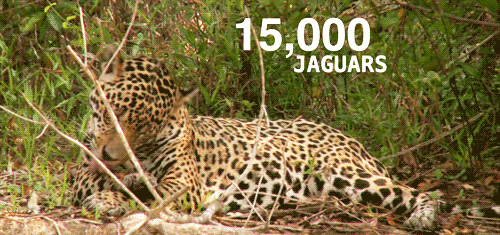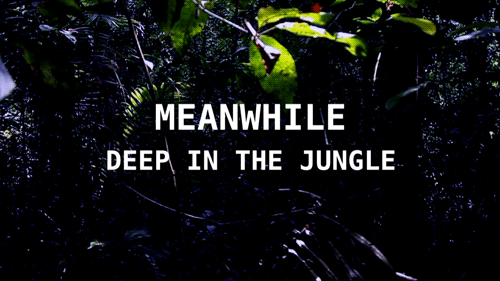‘TechKnow’ tries to attract a jaguar using something they love -- cologne
The Amazon jungle spans 2.7 million miles across 9 nations on the South American continent. The jungle is home to millions of varieties of plants, animals, insects and more, many of which can only be found in this one area of the globe. “TechKnow” contributor and entomologist Phil Torres focuses primarily on butterflies in his research, but on this trip he’s looking for jaguars.

Only 15,000 jaguars remain in the entire world.
“The jaguar is an indicator species because it’s a very wide-ranging animal,” Miguel Ordenana, a wildlife biologist who works with a conservation group called Paso Pacifico, tells Torres. “It needs a lot of habitat and it prefers areas with lush and dense cover.”
Today, jaguars are considered endangered, with only 15,000 left in the wild. The biggest threat to the jaguar population in the Amazon is deforestation, clear-cutting large areas of the jungle ecosystem, shrinking the jaguars habitat. Paso Pacifico conducts field research with jaguars in the Amazon to study the effects of deforestation on the big cat populations.
“We want to know how big of an impact fragmentation and unsustainable agriculture are having on this species that’s very sensitive to human disturbance,” he tells Torres.
Ordenana and Paso Pacifico use remotely-triggered camera traps to observe the jaguars without disturbing them. The cameras are motion-activated and can take photos or video when triggered by a jungle creature. They also have infrared capabilities, so they can capture animal images at night as well as during the daytime.
“Good pictures of a jaguar will allow you to look at his markings” Ordenana explains. “Each marking is like a fingerprint. If you get a good shot of a certain section of its pelt, you can get an idea of what areas he’s using.”
Researchers try all kinds of tricks to entice the jaguars to come close enough for a picture. One of the most unique was discovered by researchers at the Bronx Zoo, when they found that certain types of cologne contain pheromones that can attract jaguars. So for his experiment, Torres treks into the Peruvian Amazon with a bottle of Calvin Klein Obsession for Men.
“Cologne basically elicits this response from a jaguar that makes it feel like another jaguar has been there and left its scent,” Ordenana explains. This response motivates jaguars to come closer, eliciting a desire in the big cat to mark their territory with their individual scent. It’s a low-tech solution, but as Ordenana explains to Torres, with an animal as elusive as the jaguar, researchers are willing to try any trick to obtain a photo, video, or even a fur sample. The team sets a few camera traps by dousing rags in cologne and tying them to stakes near the camera boxes.

Unfortunately for Torres, over a month of his “Obsession” experiment, his cameras fail to capture any images of a jaguar, though many creatures of the jungle show up to have their picture taken. Grey-winged trumpeters, tapirs and even ocelots are captured by the camera’s motion sensors, but the endangered big cat of the Amazon jungle remains elusive.
“The truth is, working with animals like jaguars isn’t an exact science as much as I would hope it would be,” Torres concludes. The experiment may not have worked this time, but researchers with a group called Global Vision International did have success luring jaguars using Obsession. Check out their footage below to see the elusive cats marking their territory.
Watch "TechKnow," Sundays at 7:30PM ET/4:30PM PT on Al Jazeera America.
Error
Sorry, your comment was not saved due to a technical problem. Please try again later or using a different browser.